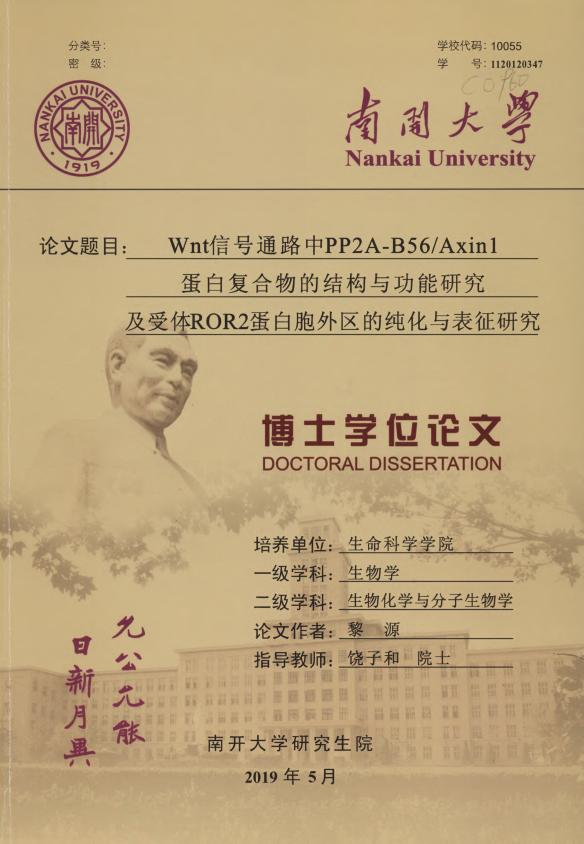| 英文摘要 |
The Wnt signaling pathway has been studied for nearly 40 years. The evolutionarily conserved Wnt signaling pathway plays critical roles in the development of tissues and organ systems and maintains homeostasis, regulating a variety of cellular processes, including cell polarity, movement, proliferation and differentiation. Dysfunction of the Wnt signaling pathway is associated with birth defects, neurodegenerative diseases, skeletal dysplasia and various types of cancer, such as gastrointestinal cancer, breast cancer and epithelial malignant tumors, which bring serious dangers to human's life and health. Better understanding of the Wnt signaling mechanism may help treatment and/or prevention of multiple diseases through targeted activation, inhibition and controlled regulation of the Wnt signaling pathway in the future. Wnt signaling is classified into the β-catenin-dependent canonical Wnt signaling pathway and β-catenin-independent noncanonical Wnt signaling pathways. The noncanonical Wnt signaling can be further classified into the planar cell polarity(Wnt/PCP) pathway and the Wnt/Ca²⁺ pathways. In the Wnt/β-catenin signaling pathway, β-catenin is the core transcription factor that controls final output of the entire signaling pathway. Our research found that the protein phosphatase 2A (PP2A) plays an important role in the regulation of β-catenin through its regulatory subunit B56 interacting with Axinl which is the scaffold protein in the β-catenin destruction complex. We firstly determined the crystal structure of PP2A-B56/Axinl complex by molecular replacement at a resolution of 2.94 Å. A conserved motif in Axin proteins (LxxLxE... W) was found to participate in interaction with the B56 subunit of PP2A. The Axinl mutation L238A disrupted its interaction with PP2A and failed to increase cytoplasmic β-catenin concentration when cells were treated with Wnt3a. Collectively, Our studies revealed the molecular mechanism of PP2A-B56/Axinl interaction and demonstrated the essential role of PP2A-B56 in Wnt-stimulated Wnt/β-catenin signaling. Receptor-tyrosine-kinase-like orphan receptor 2 (ROR2) is a co-receptor for some Wnt proteins including Wnt5a that activate the noncanonical Wnt/planar cell polarity (PCP) signaling pathway. Upregulation of ROR2is associated with several cancer forms. The extracellular region of ROR2, which contains an immunoglobulin (Ig)-like domain, a Frizzled like cysteine-rich domain (CRD) and a Kringle domain, is a potential anticancer drug target. The structural and biochemical properties of the ROR2 extracellular region remain largely unexplored. Here we describe the mapping and purification, using a baculovirus - insect cell system, of a near-fulllength ROR2 extracellular fragment (residues 53-402), which is well-behaved and suitable for future structural and biochemical analysis. We show that the extracellular region of ROR2 per se is monomeric in solution. Different monoclonal antibodies raised against the purified ROR2 protein can specifically recognize the protein and can either inhibit or activate the PCP activity in a cell-based assay, and are thus potentially useful for future mechanistic and therapeutic/diagnostic studies. The biological relevance of these antibodies further demonstrates that the purified recombinant ROR2 protein is properly folded and biochemically active. Key words: Wnt signaling pathway; PP2A-B56/Axinl complex; β-catenin; ROR2; Monoclonal antibody
|

